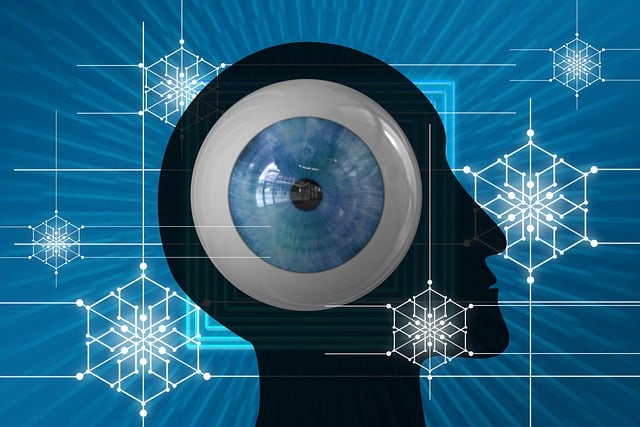In today's digital age, managing tasks is challenging. Interactive digital companions offer a solution by personalizing assistance, adapting to individual needs, and streamlining routines through intuitive interfaces. Ideal productivity tools include reminders, smart calendars, NLP, data organization, and automated tasks. These innovations, powered by AI, revolutionize daily routines, enhance focus, and improve work-life balance. Future professional lives are reshaped by AI companions that predict needs, automate tasks, and provide tailored suggestions, boosting job satisfaction.
In today’s digital age, the need for effective organization and productivity tools is more crucial than ever. Enter the concept of a Digital Companion, an interactive AI-powered assistant designed to revolutionize how we manage our tasks and daily routines. This article explores the growing importance of such companions, delving into key features, benefits, and the future potential of this technology. From understanding user needs to crafting personalized interfaces, discover how interactive digital companions are transforming the way we work.
- Understanding the Need for Digital Companions
- Key Features of an Effective Interactive Companion
- Benefits of Using Technology for Organization and Productivity
- Creating a Personalized Experience: User Interface Design
- The Future of Work: Embracing AI Companions for Efficiency
Understanding the Need for Digital Companions

In today’s digital era, our lives are increasingly filled with an array of tasks and responsibilities, from managing schedules to juggling multiple projects. This is where a digital companion comes into play, serving as a powerful tool for productivity and organization. The need for such companions arises from the complex web of information and distractions that bombard us daily. Traditional methods often fall short in keeping pace with our modern lifestyle, making interactive digital solutions a game-changer.
These digital companions offer personalized assistance, helping users stay focused and efficient. They can adapt to individual needs, providing tailored recommendations and reminders. Whether it’s organizing emails, managing to-do lists, or scheduling meetings, these companions enhance productivity by streamlining tasks and offering intuitive interfaces. The interactive nature of these tools allows for seamless navigation, making them accessible and user-friendly, ultimately revolutionizing how we approach our daily routines.
Key Features of an Effective Interactive Companion

An effective interactive companion for productivity and organization should offer a suite of features designed to streamline tasks, enhance focus, and foster efficiency. Among these, customizable reminders and notifications stand out; these tools help users stay on top of deadlines, meetings, and important tasks by presenting them with relevant information at optimal times. Additionally, integrated smart calendars allow for seamless scheduling, conflict resolution, and automatic event creation based on user interactions and preferences.
Natural language processing (NLP) and voice commands are other crucial elements. NLP enables intuitive communication between the user and the companion, facilitating quick task assignments, query resolutions, and context-aware suggestions. Voice commands not only provide a hands-free experience but also ensure accessibility for users with visual impairments or those multi-tasking. Efficient data organization through smart categorization and tagging systems is equally vital; these features help users effortlessly retrieve information and maintain a structured workflow.
Benefits of Using Technology for Organization and Productivity

The integration of technology in our daily routines has brought about a significant shift in how we approach organization and productivity. One of the key benefits is the ability to create interactive systems tailored to individual needs. Digital companions, for instance, can be designed with user-specific preferences, offering personalized reminders, tasks, and resources right at their fingertips. This level of interactivity enhances focus by streamlining information, making it easier to stay on track and manage various responsibilities.
Furthermore, technology provides efficient solutions for data management and task automation. Digital tools enable users to organize projects, set deadlines, and collaborate seamlessly, fostering productivity in both personal and professional settings. With real-time updates and access from anywhere, individuals can work flexibly and adapt to changing schedules, ultimately leading to improved efficiency and a better work-life balance.
Creating a Personalized Experience: User Interface Design

A digital companion designed for productivity and organization should offer a personalized experience through an intuitive user interface. This means tailoring interactions to reflect individual workflows, preferences, and goals. By leveraging machine learning and adaptive algorithms, the companion can learn from user behavior, anticipate needs, and present information in a contextually relevant manner. An effective UI design should be interactive, allowing users to seamlessly navigate tasks, set reminders, and access resources with minimal effort.
Visual cues, intuitive navigation, and customizable layouts play a significant role in creating a personalized interface. Users should be able to customize their dashboards, choose themes that resonate with them, and rearrange elements to suit their preferences. Interactive features like drag-and-drop functionality, voice commands, and gesture controls enhance the user experience, making task management more engaging and efficient. Ultimately, a well-designed UI fosters productivity by streamlining workflows and ensuring users can access the tools they need without distraction or complexity.
The Future of Work: Embracing AI Companions for Efficiency

The future of work is evolving, and at the forefront of this transformation are artificial intelligence (AI) companions. These digital assistants are no longer a concept confined to science fiction; they are becoming an integral part of our professional lives, revolutionizing the way we work. By leveraging interactive AI technology, individuals can enhance their productivity and efficiency like never before.
Imagine having a personal companion that understands your workflow, predicts your needs, and automates mundane tasks. These AI companions learn from user behavior, adapt to individual preferences, and offer tailored suggestions. They can schedule meetings, prioritize emails, manage calendars, and even provide personalized recommendations for improving focus and concentration. This level of interaction not only saves time but also allows professionals to direct their energy towards more complex, creative, and strategic tasks, ultimately boosting productivity and job satisfaction.






